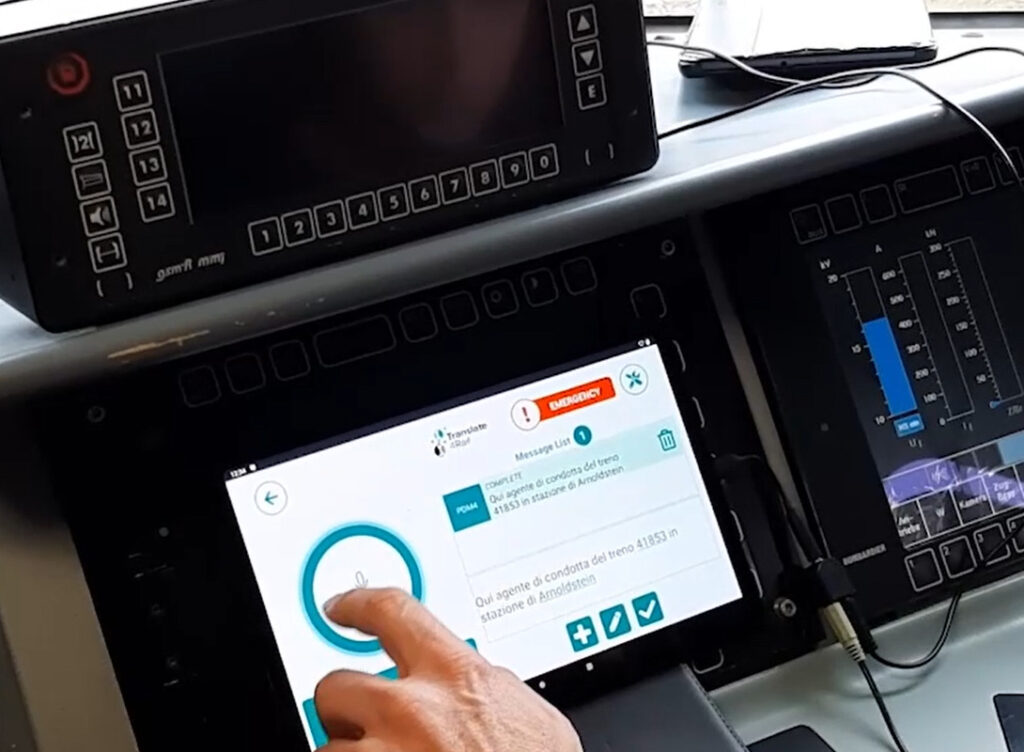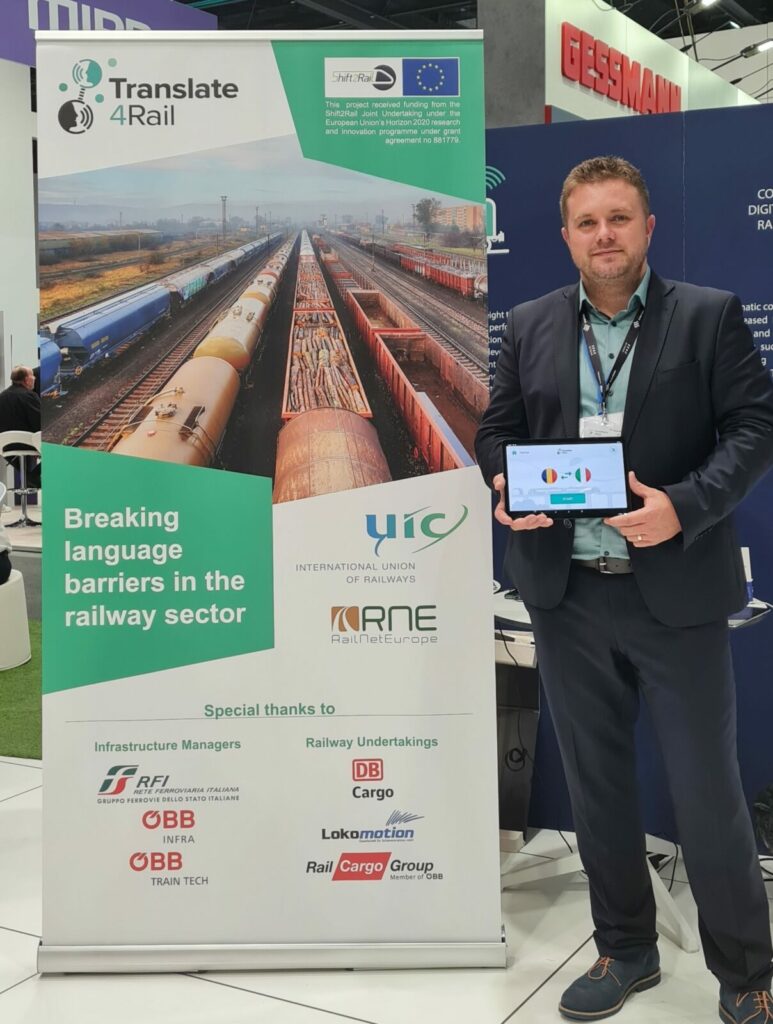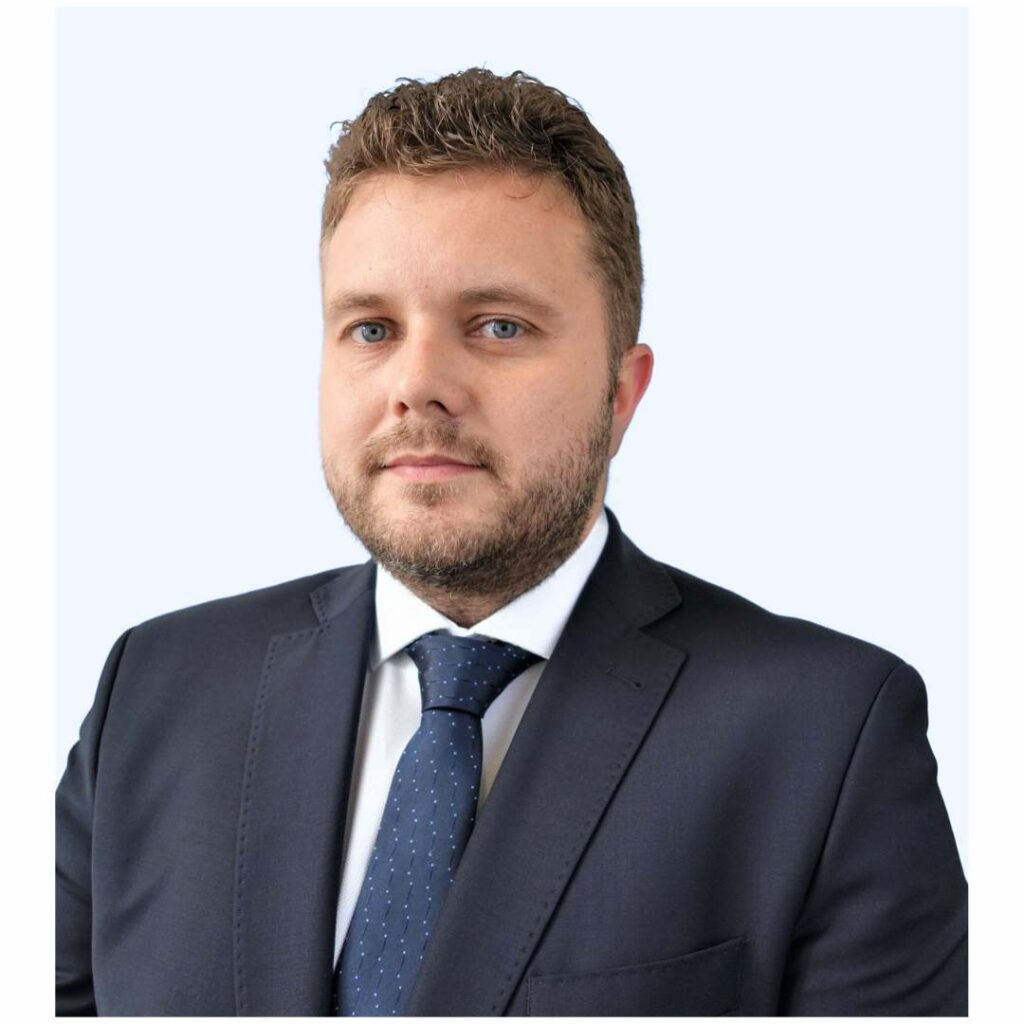Effective communication is crucial for smooth and efficient railway operations, especially in an international context. Recognising the need to overcome language barriers, the Language Programme (LP) was initiated by RNE’s Members in December 2017. Since its inception, the programme has aimed to provide a comprehensive solution suitable for all sectors within the railway industry, fostering improved communication and operational efficiency. Led by RNE in collaboration with railway associations and authorities such as UIC, ERFA, ERA, CER, and EIM, the Language Programme has made significant strides in addressing key areas of interest. This article explores the objectives, achievements, cooperation with members, and ongoing efforts of the Language Programme, highlighting its impact on international train operations and the future of language-related challenges in the railway industry.
The Two Phases of the Language Programme
Phase One: Collecting Information and Studying Ergonomics
During the initial phase of the Language Programme, the LP members, alongside RNE, focused on collecting valuable information about languages, available tools, and studying the ergonomic aspects of the future language tool. This groundwork laid the foundation for the subsequent phases, ensuring a comprehensive and well-informed approach.
Phase Two: Detailed Focus on Operational Conditions and Requirements
Building upon the initial phase, the second phase of the Language Programme adopted a more detailed approach. It centered on operational conditions and requirements, covering all aspects related to pilot and language tool testing. A significant emphasis was placed on using predefined messages (PDMs) in communication, defining the interface, operational communication requirements, and prioritising safety.
Translate4Rail (T4R): A Groundbreaking Project
In December 2019, the Language Programme achieved a major breakthrough with the launch of the joint RNE-UIC project, Translate4Rail (T4R). This project received substantial support from members and was funded by Shift2Rail under the European Union’s Horizon 2020 research and innovation programme. T4R introduced an entirely new dimension to the railway sector.
Prototype Development and Iterative Process
The T4R project involved the development of a tablet-based application, known as the Language Tool (LT), through an iterative process. This collaborative effort between the project consortium made up of RNE and UIC, and their members, both Infrastructure Managers (IMs) and Railway Undertakings (RUs), led to the creation of functional and technical specifications aligned with sector requirements and recommendations. The prototype underwent rigorous laboratory and field testing, with feedback loops facilitating continuous improvement
Successful Pilots and Testing
Thanks to the support and involvement of RNE and UIC Members, and relevant railway stakeholders, the T4R LT prototype underwent operational testing. Two pilots were conducted on the Italian-Austrian cross-border section of the Villach-TarvisioPontebba railway line. Notable Infrastructure Managers such as RFI and ÖBB Infra, and Railway Undertakings such as DB Cargo Italy, Lokomotion, Rail Cargo Group, and Rail Traction Company participated in these tests. The results demonstrated the added value of the PDMs concept, enabling effective communication between train drivers and signallers through the tablet-based prototype.

Showcasing the T4R LT Prototype
Following the completion of the T4R project in December 2021, the LT prototype was presented at notable events in 2022 and continues to be demonstrated in 2023. These demonstrations have sparked significant interest within the railway sector and among relevant stakeholders. The tool’s capabilities were showcased at invitation by Europe’s Rail at various occasions, including InnoTrans fair in Berlin and Transport Research Arena (TRA) in Lisbon. Furthermore, several meetings were held to present the T4R LT to Infrastructure Managers (IMs), Railway Undertakings (RUs), ministry representatives, and safety authorities. Notably, the T4R LT was presented to Members of the European Parliament at the Rail Forum Europe event in April 2023, in collaboration with CER. The dissemination of T4R project results further continued at Transport & Logistics in Munich in May 2023.

Expanding the Scope: RECOMI and Future Developments
Building on the success of the T4R LT prototype, it was further employed in the RNE RECOMI project, which aimed to enhance communication at regional level between dispatchers and signallers. From February 2022 to April 2023, operational tests were carried out through the ViSe Pilot, involving close cooperation between RFI, SŽ-I, and RFC Mediterranean. This provided an opportunity to test the T4R LT prototype’s functionality for exchanging information between two Infrastructure Managers represented by dispatchers in regional traffic control centres in Venezia Mestre and Ljubljana, as well as between two border stations, Villa Opicina and Sežana.
Continued Collaboration and Future Development
Presently, the Language Programme members are continuing their work, actively engaged in two newly launched Task Force groups. These groups are focused on defining the requirements and specifications for the further development of the T4R LT, ensuring it aligns with the evolving needs of the railway industry. Simultaneously, efforts are being made to explore the potential development of a tool concept known as the LT Advanced concept, which aims to provide centralised direct translation in the GSM-R network. This ongoing collaboration and innovative thinking demonstrate the commitment to improving language-related communication challenges in the railway sector.
Conclusion
The Language Programme has emerged as a crucial initiative in the railway industry, addressing the vital need for effective communication in an international context. Through the Translate4Rail (T4R) project, significant progress has been made in developing a tablet-based Language Tool (LT) prototype, enabling enhanced communication between train drivers and signallers. The successful pilots and subsequent demonstrations have showcased the potential of this technology to revolutionise railway operations. With continued efforts and collaboration among stakeholders, the Language Programme is poised to overcome language barriers and shape the future of language-related challenges in the railway industry. By fostering improved communication and operational efficiency, the Language Programme is paving the way for a seamless and interconnected railway network that transcends borders and ensures a safer, more efficient, and enjoyable travel experience for all.
Learn more
To find out more about the Language Programme, visit the related section of our website HERE or contact Juraj Maliaček, Traffic Management Manager at RNE coordinating RNE’s activities in the Language Programme.
